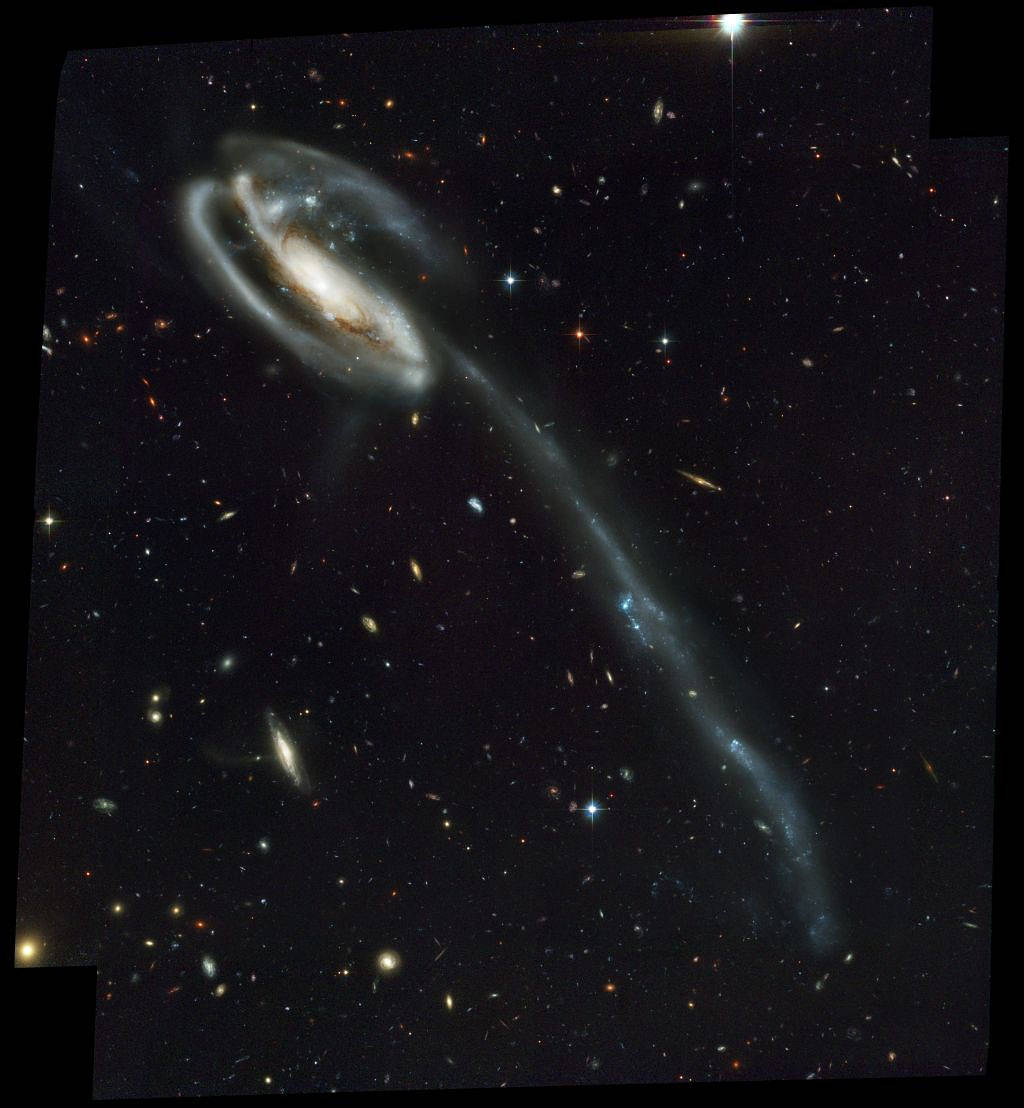In this stunning vista recorded with the Hubble Space Telescope’s Advanced Camera for Surveys, distant galaxies form a dramatic backdrop for disrupted spiral galaxy Arp 188, the Tadpole Galaxy. The cosmic tadpole is a mere 420 million light-years distant toward the northern constellation Draco. Its eye-catching tail is about 280 thousand light-years long and features massive, bright blue star clusters.
Scientists believe that a more compact intruder galaxy crossed in front of Arp 188 – from left to right in this view – and was slung around behind the Tadpole via gravitational attraction. During the close encounter, tidal forces drew out the galaxy’s stars, gas, and dust forming the spectacular tail. The intruder galaxy itself, estimated to lie about 300 thousand light-years behind the Tadpole, can be seen through foreground spiral arms at the upper left. Like its terrestrial namesake, the Tadpole Galaxy will likely lose it tail as it grows older, the tail’s star clusters forming smaller satellites of the large spiral galaxy.Image Credit: NASA
1 min read



























